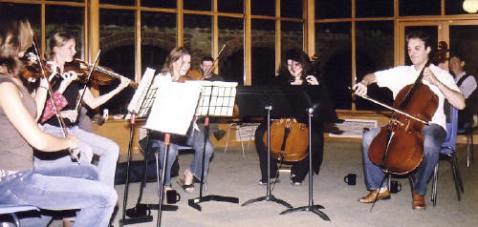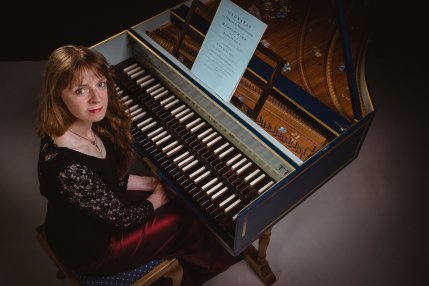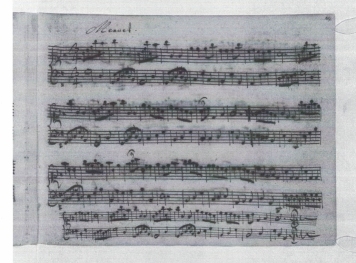I regularly write feature articles for Piano Professional Magazine published by EPTA (European Piano Teachers Association). The most recent, taken from the Spring 2018 Issue (Issue 47, pages 20 – 21), sheds some light on the sustaining pedal. I hope you find it of interest.
The sustaining or damper pedal is one of the most important assets for a pianist. It adds another dimension to the piano timbre, and can provide a whole variety of sound layers. The most commonly used pedal, being the furthest right of the two or three pedals on a standard upright or grand piano, it’s played by the right foot. When depressed, the sustain pedal literally moves all the dampers away from the strings, which allows them to vibrate with ease, and they will continue vibrating until the sound ceases, or the pedal is released. Look inside the instrument and watch the dampers (on a grand piano) being lifted as the pedal is depressed. Students love to do this, particularly new students, who may be unaware of how the piano works. It is well worth spending part of a lesson explaining the workings of the instrument; a whistle-stop tour, finishing with a pedal overview plus demonstrations!
The sustaining pedal began life as a hand stop, examples of which survive on some of the earliest instruments. Then a knee lever was introduced around 1765 in Germany, and whilst this was more convenient than the hand stop (which was apparently much admired by W A Mozart), the foot pedal is undeniably far easier to operate, and it was introduced sometime during the 1770s by English piano builders.
The right pedal enriches piano tone markedly, allowing a pianist to create many colours, add sonority and resonance to passages, as well as conjure shimmering, atmospheric sounds. Many believe it augments the piano sound and whilst this isn’t strictly true, it does add a fuller, more sonorous tone, which could be described as akin to playing in a church.
The most fundamental technique in good pedalling is good listening. We generally pedal with our ears, and being attentive is key, but there are a few different techniques to employ, which can be used in a whole variety of styles. One basic rule: a little sustaining pedal goes a long way. Too much will seriously ruin an otherwise competent interpretation, generally irrespective of the composer or style, which is why it’s a good idea to practice without using any, particularly when starting to learn a new piece. I encourage students to add pedal only when they have a firm grasp of their new piece and have already established solid legato fingering, joining notes with the fingers wherever possible, as opposed to relying on the sustaining pedal to do this job. Pedalling is also tricky to write in a score, as it varies constantly, depending on the venue, acoustic, piano, composer, and the list goes on.
To use the pedal, rest the heel firmly on the floor, the right foot should be at an angle of around 30 or 35 degrees. When depressing the pedal (and this applies to the other pedals as well), play with the ball of the foot (or perhaps the big toe – everyone has their own preference here) and take it down (to engage the pedal) and up (to release the sound) quietly. The foot should keep contact with the pedal as much as possible because pedal or foot tapping is not a desired effect.
The last paragraph may all seem fairly obvious, but recent adjudicating has revealed (to me at least) that these points often need reiterating. As teachers, I feel it’s our job to ensure that students are well versed in the workings of the pedal, and how it can enhance or detract from a performance. With this in mind, it may be prudent to introduce the sustaining pedal at a fairly early stage, even if just to add resonance to the final note or chord in a piece.
There are several ‘layers’ to the sustaining pedal; perhaps as many as four or five. This might be considered the ‘pedal journey’ as the dampers rise from the strings, a significant portion of this journey includes the area requiring the foot to depress the pedal as little as a quarter of an inch or even less (although this totally depends on the instrument), as the dampers just begin to rise and have ‘cleared’ the surface of the strings. This area is conducive to partial damper release and would be where such techniques as half pedalling, half damping and flutter or surface pedalling occur. When the dampers finally clear the strings completely (and the foot pushes the pedal down as far as possible), which allows a full release of sonority, the resonance grants the pianist the opportunity to use the maximum richness of colour and vibration, as well as retaining sound when fingers leave the keys. Generally, pianists move swiftly from one ‘layer’ of pedalling to another without really noticing any boundaries.
Pedalling techniques can be roughly divided into the following:
Direct pedalling; which enriches the sound in separated chords. Depress the pedal with a chord (or intended passagework) at the same time as the fingers (or a fraction after), and release the pedal with the fingers, producing a clean, clear and sonorous chordal effect, as shown in Ex. 1. Pedal markings are indicated under the score. Take the pedal down (with the Ped. sign), and where the line is broken with an upward marking, take the pedal up. Depress again, if the pedal is to be played continuously (as in Ex. 2), but if the marking stops then pedal playing must cease too. An extension to this pedalling might be rhythmic pedalling, where brief touches of direct pedalling can add rhythmic shape to chords or rapid passagework. This is also true of accents and syncopations.
Ex. 1
 Legato pedalling; which is similar to syncopated pedalling, overlapping with the notes being played. This involves depressing the pedal a moment later than finger work. To practice this, play a succession of five notes (perhaps C – G in the right hand, as in Ex. 2). Start by playing middle C with the thumb, and immediately afterwards depress the pedal; now play the D (also with the thumb), and a millisecond after, release the pedal and depress again very quickly, to clear the sound of the C. This should be done quickly and seamlessly, so as to limit smudging. Pedal changes might be quick or slow depending on the speed of the piece and the number of changes needed. As a general rule, in legato or legatissimo pedalling, a new pedal should come just after each harmony change, and it’s advisable to limit the blurred or hazy sound as much as possible.
Legato pedalling; which is similar to syncopated pedalling, overlapping with the notes being played. This involves depressing the pedal a moment later than finger work. To practice this, play a succession of five notes (perhaps C – G in the right hand, as in Ex. 2). Start by playing middle C with the thumb, and immediately afterwards depress the pedal; now play the D (also with the thumb), and a millisecond after, release the pedal and depress again very quickly, to clear the sound of the C. This should be done quickly and seamlessly, so as to limit smudging. Pedal changes might be quick or slow depending on the speed of the piece and the number of changes needed. As a general rule, in legato or legatissimo pedalling, a new pedal should come just after each harmony change, and it’s advisable to limit the blurred or hazy sound as much as possible.
Ex. 2
 Legato should ideally be all about using the fingers, as it’s primarily a finger technique; legato using the pedal is generally for added colour and sonority, or on the occasion where it’s impossible for fingers to join (i.e. in large leaps). It can also be helpful with regard to melodic inflection and projection, phrasing, articulation, and sustaining bass notes in accompaniment figures, as well as allowing unbroken sonority in accompanying figurations or chords.
Legato should ideally be all about using the fingers, as it’s primarily a finger technique; legato using the pedal is generally for added colour and sonority, or on the occasion where it’s impossible for fingers to join (i.e. in large leaps). It can also be helpful with regard to melodic inflection and projection, phrasing, articulation, and sustaining bass notes in accompaniment figures, as well as allowing unbroken sonority in accompanying figurations or chords.
Half-pedalling; consisting of a quick movement, to lose top harmonies and retain bass notes. The main aim here is to reduce too much blurring or smudging of sound. Start by checking out the instrument to see how long dampers must remain in contact with the keys before the sound stops, then practice by taking the pedal down (and up) varying amounts (but not depressing as far as the foot will go), swiftly ‘brushing’ or ‘skimming’ the dampers on the strings.
Half-damping; without engaging the pedal completely, for a light, veiled effect. Employing almost a surface pedalling, there are many variations of this movement, which will clear the sound but still provide an atmospheric haze. Several degrees of pedal release might be involved in this technique, and different repertoire and styles will determine the amount of damper release required.
Flutter, surface or vibrato pedalling; similar to half-damping, this is based on very quick, light movements, in order to reduce accumulating sound. Such pedalling is based on frequent and sometimes irregular changes, and is applied through fast passages work, scales or runs, providing weight to the sound yet ridding it of the blurring effects. Avoid depressing the pedal completely for this technique. Students might find practising with scales helpful; aim to continually lightly raise or ‘hover’ the foot in an octave scale (as in Ex. 3). As with many pedalling techniques, listening is the most important aspect, but the following pedal markings may be used to denote flutter pedalling:
Ex. 3
 Finger Pedalling
Finger Pedalling
This has little to do with actual pedalling, but probably should be mentioned here, due to its title and overall effect. Notes are held with the fingers in place of the pedal; akin to finger legato, but with a ‘holding-over’ effect, keeping the notes depressed with the fingers slightly longer than is usually the case. In this technique, the pedal may be employed for quick changes, however, it’s the fingers creating the illusion of pedalling.
If the foot engages the pedal before notes are played, as opposed to once notes have been played (or at the same time), a much more resonant sound ensues as all the strings resonate fully (and are already in position at the point when the dampers hit the strings), which can be ideal for a full-bodied sonority required in certain repertoire.
Between the point where the foot is completely depressed to the floor and where it first engages the pedal mechanism, there are many assorted subtleties available to pianists. Every piano is different therefore pedals all feel and sound different too. The sustaining pedal can really add dynamics and shape, due to the accumulation of sounds whilst depressed. It’s an integral aspect of piano playing and students are usually very keen to explore its possibilities. If they are encouraged to keep experimenting and they are able to attune their listening skills, they will discover a myriad of ways to enhance their piano playing.
You can read the original article, by clicking on the link below:
The Sustaining Pedal
My Publications:
For much more information about how to practice piano repertoire, take a look at my two-book piano course, Play it again: PIANO (Schott). Covering a huge array of styles and genres, 49 progressive pieces from approximately Grade 1 – 8 level are featured, with at least two pages of practice tips for every piece. A convenient and beneficial course for students of any age, with or without a teacher, and it can also be used alongside piano examination syllabuses too.
You can find out more about my other piano publications and compositions here.
from Melanie Spanswick https://ift.tt/2JNGwKA
 When the academic year ends Summer schools begin, and they now appear to be more popular than ever. Students have so many options to choose from that it must be a challenge deciphering which might offer the most inspirational learning experience. I will be spending two weeks in Shropshire this year (from July 22nd – 5th August) at Moreton Hall enjoying PIANO WEEK, hosted and organised by pianist Samantha Ward. But if you would prefer to stay nearer London, the Cadenza International Summer Music School might be an excellent choice.
When the academic year ends Summer schools begin, and they now appear to be more popular than ever. Students have so many options to choose from that it must be a challenge deciphering which might offer the most inspirational learning experience. I will be spending two weeks in Shropshire this year (from July 22nd – 5th August) at Moreton Hall enjoying PIANO WEEK, hosted and organised by pianist Samantha Ward. But if you would prefer to stay nearer London, the Cadenza International Summer Music School might be an excellent choice.










